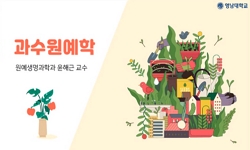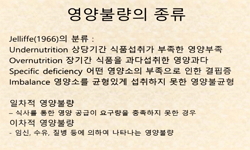Purpose: This study investigated fruit and vegetable intake and associated sociodemographic and dietary factors, and compared the nutritional intake according to the fruit and vegetable intake level among Korean adolescents. Methods: This study was c...
http://chineseinput.net/에서 pinyin(병음)방식으로 중국어를 변환할 수 있습니다.
변환된 중국어를 복사하여 사용하시면 됩니다.
- 中文 을 입력하시려면 zhongwen을 입력하시고 space를누르시면됩니다.
- 北京 을 입력하시려면 beijing을 입력하시고 space를 누르시면 됩니다.
https://www.riss.kr/link?id=A109129062
- 저자
- 발행기관
- 학술지명
- 권호사항
-
발행연도
2024
-
작성언어
Korean
- 주제어
-
KDC
594
-
등재정보
SCOPUS,KCI등재
-
자료형태
학술저널
- 발행기관 URL
-
수록면
292-306(15쪽)
- 제공처
-
0
상세조회 -
0
다운로드
부가정보
다국어 초록 (Multilingual Abstract)
Purpose: This study investigated fruit and vegetable intake and associated sociodemographic and dietary factors, and compared the nutritional intake according to the fruit and vegetable intake level among Korean adolescents.
Methods: This study was conducted on 1,676 adolescents who participated in the 2016–2019 Korea National Health and Nutrition Examination Survey. The subjects were classified into four groups based on the fruit and vegetable intake recommendations in 2020 Dietary Reference Intakes for Koreans: Application (KDRIs Application): sufficient fruit intake (SF) group, sufficient vegetables intake (SV) group, sufficient fruit and vegetables intake (SFV) group, and not sufficient fruit and vegetable intake (NS) group The nutrient intake per day in each group was compared.. Logistic regression analysis was performed to examine the factors influencing fruit and vegetables intake.
Results: In the sample of adolescents surveyed, only 1.40% met the recommended daily intake of fruits and vegetables, while 79.54% fell below the established threshold for adequate consumption. Female adolescents, those with fathers holding university degrees or above, and those who ate breakfast at least three times a week were likelier to have adequate fruit intake. Male adolescents and those from higher-income households were likelier to consume vegetables. Females, those who ate out daily, those from lower-income households, and those who understood food labels were likelier to have adequate fruit and vegetable intake. The daily nutrient intake and intake-to-requirement ratio significantly differed according to the fruit and vegetable intake groups. The NS and SF group had lower ratios for calcium and iron, while the NS group had the lowest vitamin A and C intake. By contrast, the SFV group met almost all daily nutrient requirements, except for calcium and vitamin A.
Conclusion: This study highlights the need for nutrition education programs to encourage adolescents to consume adequate amounts of fruits and vegetables.
동일학술지(권/호) 다른 논문
-
Effects of distractions such as audio, audiovisual, and hand-use on food intake and satiety ratings
- 한국영양학회
- Sukkyung Shin
- 2024
- SCOPUS,KCI등재
-
- 한국영양학회
- Ji-Sook Park
- 2024
- SCOPUS,KCI등재
-
중년 남성과 여성의 건강 관련 삶의 질에 따른 건강 및 식생활 특성: 2019년, 2021년 국민건강영양조사 자료를 이용하여
- 한국영양학회
- 김사림(Sarim Kim)
- 2024
- SCOPUS,KCI등재
-
청소년 영양지수(NQ-A)를 활용한 서울지역 일부 고등학교 학생의 식행동과 삶의 질의 관련성 연구
- 한국영양학회
- 김호정(Ho-Jung Kim)
- 2024
- SCOPUS,KCI등재






 DBpia
DBpia






